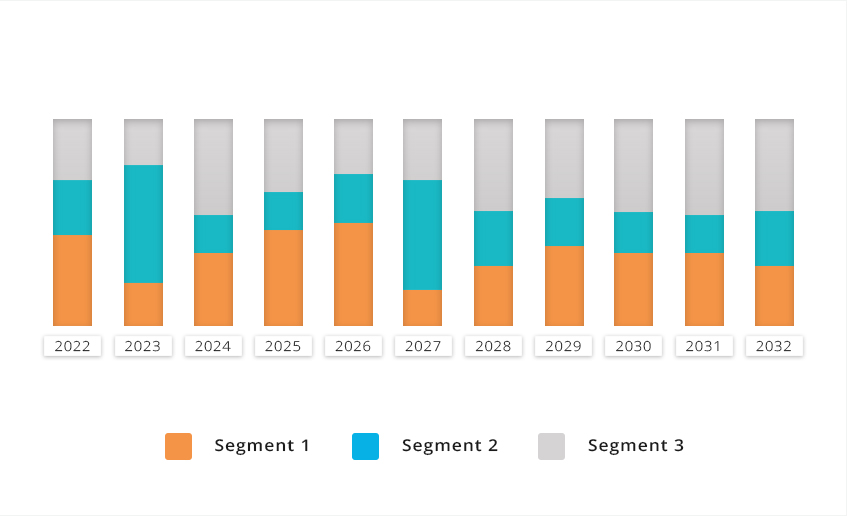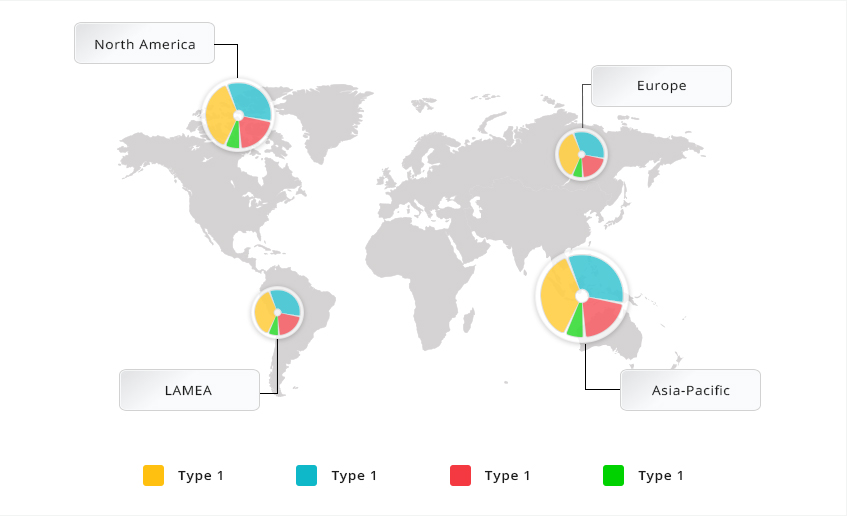The Anti-collision sensors market study provides a detailed analysis pertaining to the global market size & forecast, segmental splits, and further bifurcation into regional & country-level. In addition, it outlines the market dynamics & trends, Porters’ five force analysis, competitive landscape, and market share analysis.
Anti-collision sensors market Revenue ($Million), By Application, 2023 to 2032

Graph for representation purpose only
Segmental Outlook
The global Anti-collision sensors market is segmented into by type, by end user, by sales channel.
The segmental analysis includes real time and forecast in both quantitative and qualitative terms. This will assist clients to recognize the most lucrative segments for investors to capitalize in the market, based on a comprehensive backend analysis regarding the segmental performance, along with brief understanding of the operating companies in the market and their development activities in line with their products.
Anti-collision sensors market Revenue ($Million), By Type, 2023 to 2032

Graph for representation purpose only
Competitive Scenario
The report profiles the top players operating across the globe, along with market share analysis, and an outlook on top player positioning. In addition, the study focuses on the developmental strategies such as product launch, mergers & acquisitions, and collaborations adopted by the market frontrunners to maintain a competitive edge in the marketspace.
Key companies identified in the report are Robert Bosch, Continental AG, Magna International, Denso Corporation, Autoliv, ZF Friedrichshafen AG, Delphi Automotive, Valeo Group, Infineon Technologies AG, Delphi Technologies
Report Coverage
Market Size Projections: 2023 to 2032
Major Segments Covered: by type, by end user, by sales channel
Market Dynamics and Trends
Competitive Landscape Reporting
Note
Apart from the list of countries and companies provided in the study, clients have the liberty to customize the list according to their stated requirements.
Given that AMR offers 20% free customization policy, clients can request AMR for a tailor-made report by considering their requirements. However, any kind of modification will be finalized post a quick feasibility check.
Anti-Collision Sensors Market Report Highlights
| Aspects | Details |
| By Type |
|
| By End User |
|
| By Sales Channel |
|
| By Region |
|
| Key Market Players | Continental AG, Delphi Technologies, Valeo Group, Autoliv, Denso Corporation, Infineon Technologies AG, ZF Friedrichshafen AG, Magna International, Delphi Automotive, Robert Bosch |
Loading Table Of Content...



